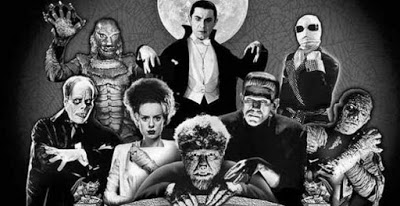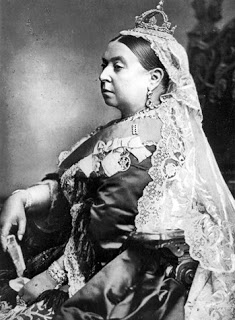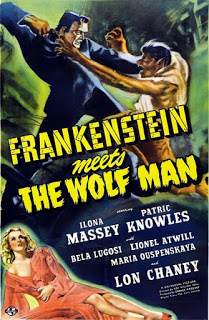Well, that didn’t take long. News has come out that Universal’s Dark Universe, which was supposed to be a shared universe with their various monster properties like Dracula and Frankenstein, has folded after just one (well, two, if you count Dracula Untold, which was in, and then out, of the Dark Universe) film, this year’s awful Tom Cruise Mummy flick.
I mused on the Universal monsterverse a few years ago, but I’d like to do so again.
To my mind, the chief problem was the idea of taking a classic horror movie icon like the Mummy and putting it in a non-horror movie.
2017’s The Mummy was a high-budget action movie, with planes, and explosions, and Tom Cruise, and action, and chases, and spectacular special effects, and all the things that were suspiciously missing from almost all of the other Mummy movies that came before it. Even the excellent 1999 Mummy with Brendan Fraser, which was sort of a mix of action and horror, played up the horror more than the action most of the time. But the sequel inverted that formula, and suffered greatly as a result.
My proposal is to make a shared Universal horror universe (I’ll call it DU2) that is focused not on big-budget action flicks, but which is focused on medium-budget horror movies. Stop swinging for the fences, and concentrate on hitting singles and doubles, and you’ll have a franchise that will be going for decades. Here are the guidelines I’d use.
1. Make the films period pieces. Start them in the late 1870’s, near the height of the Victorian age. Explorers are penetrating deepest, darkest Africa, science is advancing steadily but superstition is still rife, Bedlam is still in operation, surgery is still a gruesome thing, and Spiritualism and ceremonial magic are surging. H.G. Wells and Jules Verne are writing, and some of their stories could also be used as material. Jack the Ripper is only a decade away, but there’s also Spring-Heeled Jack and other Victorian curiosities to work into the background. Doing so can accommodate all of the major monsters, while nicely avoiding high-tech cop-outs that modern films have to explain away.
2. Start small, and build to crossovers. Have a Dracula movie set in Transylvania in 1878. Then Frankenstein in Bavaria in 1879. An expedition to Egypt uncovers the Mummy in 1880. Dracula arrives in London in 1881. Frankenstein and his former mentor Doctor Praetorius create a female monster in 1882. Stretch them out, again emphasizing horror and suspense over action and flashy special effects.
3. Don’t have a generic, all-encompassing “anti-monster society.” Each film has their own protagonists and heroes, but there are crossovers with minor characters. Keep the early crossovers to minor characters; the same British police captain that we see in a Dracula movie set in London is also in the Invisible Man movie, or Doctor van Helsing is a correspondent of Doctor Jekyll, both being interested in the nature of the subconscious, but they don’t get together until a few movies later. That sort of thing.
4. Tie things together, especially in the early years, with a television show. Universal’s House of Horrors would be episodic, centered on a trio of characters (a Spiritualist medium, a ceremonial magician (proto-Golden Dawn), and a former soldier from service in India) who encounter supernatural oddities across England and Europe, and help various people overcome them. Have the same minor characters we see in the films, show up here. But keep it centered on horror. This should be a creepy, tense, scary show, not “Supernatural by Gaslight.” Ghosts, Satanic cults, monsters out of folklore; these should be the focus. They can hear about the big bads, but they don’t encounter them, except second-hand.
5. The payoff isn’t a big, Avengers-like mash-up of all the players. It’s the set-up of pairings between the monsters, and the subsequent mixing and matching of their adversaries. Dracula and the Mummy are excellent “organizer” type monsters, who might enlist others as minions, pawns, or partners in specific schemes, such as the Monster or the Wolfman. Others might get together due to mutual affinity; Dr. Jekyll and van Helsing are both scientists, as are Frankenstein and Griffin (the Invisible Man). There are also possibilities for neat inversions; the audience may know that Mr. Hyde is the same person as Dr. Jekyll, but van Helsing might not realize it, and it might become a plot complication as Hyde is in league with Dracula, while Jekyll is helping van Helsing.
I really think that would work, and would keep the studio churning out films for a goodly while, as long as they were good in and of their own right, with strong characterization and a heavy emphasis on horror and suspense. But what do I know? They’ll crank out some standalone Frankenstein movie set in modern-day New York and have cloning or some crap, and lots of car chases. sigh












Sounds like good ideas. I nominate you to run a movie studio. It's not like you could do much worse than they are right now.
I would so watch that.
I hope the right person reads this, because it is brilliant. I'd love to see these remade and this is the right time to see them in a shared universe. Moviegoers have been trained by Marvel to appreciate that.
This does sound a good approach.
Somewhat related, I'd like like to see a well-done (maybe computer animated) version of a Night in the Lonesome October.
Except for #4: TV Show, I agree. The movies should be independent of watching a television show. Standalone.
Too bad Universal wet the bed this time around. It'll be another 50 years before they try again I suppose.